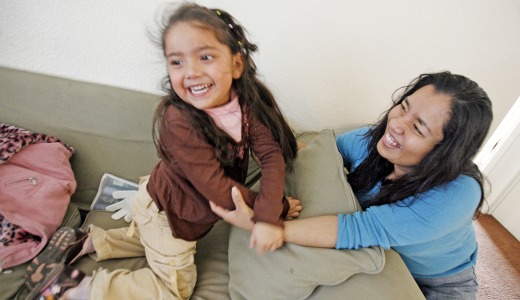
Why do people commit atrocities? What is responsible for brutality and the cold blooded murder of innocents carried out by Nazis, the Hutu in Rwanda, or the United States against the Vietnamese people and more recently much of the civilian population of Iraq? Some scientists believe they have found the answer.
ScienceDaily reports (“Brain’s Failure to Appreciate Others May Permit Human Atrocities,” 12-14-2011) that the part of the brain responsible for social interaction with others may malfunction resulting in callousness leading to inhumane actions towards others. Scientists at Duke and Princeton have hypothesized, in a recent study, that this brain area can “disengage” when people encounter others they think are “disgusting” and the resulting violence perpetrated against them is due to thinking these objectified others have no “thoughts and feelings.”
The study, according to ScienceDaily, considers this a “shortcoming” which could account for the genocide and torture of other peoples. Examples of this kind of objectification can be seen in the calling of Jews “vermin” by the Nazis, the Tutsi “cockroaches” by the Hutu, and the American habit of calling others “gooks” (as well as other unflattering terms).
Lasana Harris (Duke) says, “When we encounter a person, we usually infer something about their minds [do they have more than one?] Sometimes, we fail to do this, opening up the possibility that we do not perceive the person as fully human.” I wonder about this? What is meant by fully human? Surely the Hutu, for example, who had lived with the Tutsi for centuries, did not really fail to infer that they had “minds.”
Practicing something called “social neuroscience” which seems to consist of showing different people pictures while they are undergoing an MRI and then drawing conclusions from which areas of the brain do or do not “light up” when asked questions about these pictures, the scientists conducting this study discovered that an area of the brain dealing with “social cognition”– i.e., feelings, thoughts, empathy, etc., “failed to engage” when pictures of homeless people, drug addicts, and others “low on the social ladder” were shown.
Susan Fiske (Princeton) remarked, “We need to think about other people’s experience. It’s what makes them fully human to us.” ScienceDaily adds the researchers were struck by the fact that “people will easily ascribe social cognition– a belief in an internal life such as emotions– to animals and cars, but will avoid making eye contact with the homeless panhandler in the subway.”
I don’t think many people, at least if they haven’t recently watched “Herbie,” really think cars have an internal emotional life. The reason people avoid eye contact with the homeless is not, I think, because they don’t see them as fully human, but because they do and they know, deep down, that they are in what Sartre called “bad faith” with respect to not helping or being able to help a fellow human being.
What seems to be unaddressed in this study is the “cause” of the objectification of others. Suppose brain area X is responsible for empathy and it does not “light up” in Nazis when they are around Jews. Is this the reason that Nazis engage in inhumane acts? Is it a brain malfunction? Or is it perhaps the case that people who have been educated as Nazis, who have been subjected to intense Nazi propaganda and have been led to believe the Nazi worldview will then have brains that won’t respond to empathy to those considered hostile to Nazism? It is not a brain malfunction but a normal brain response to educational conditioning. This is, by the way, why ruling classes seek to control the content of public and private education and de facto censor views and individuals they view as “subversive.”
This is an interesting scientific study, but I do not think the answer to man’s inhumanity to man, at least with respect to large political and social movements, is to be explained by college students (the test sample) looking at pictures while undergoing an MRI.
Photo: Evelyn Cristin Garcia, 4, from Santa Fe, N.M. plays with her mother Anaberta Garcia in the living room of the apartment where she is staying on March 17, 2010. Garcia shares a small room in a friend’s three-room apartment with her two sisters, her mother and her father. The family is technically homeless. (AP Photo/The New Mexican, Luis Sanchez Saturno)












Comments